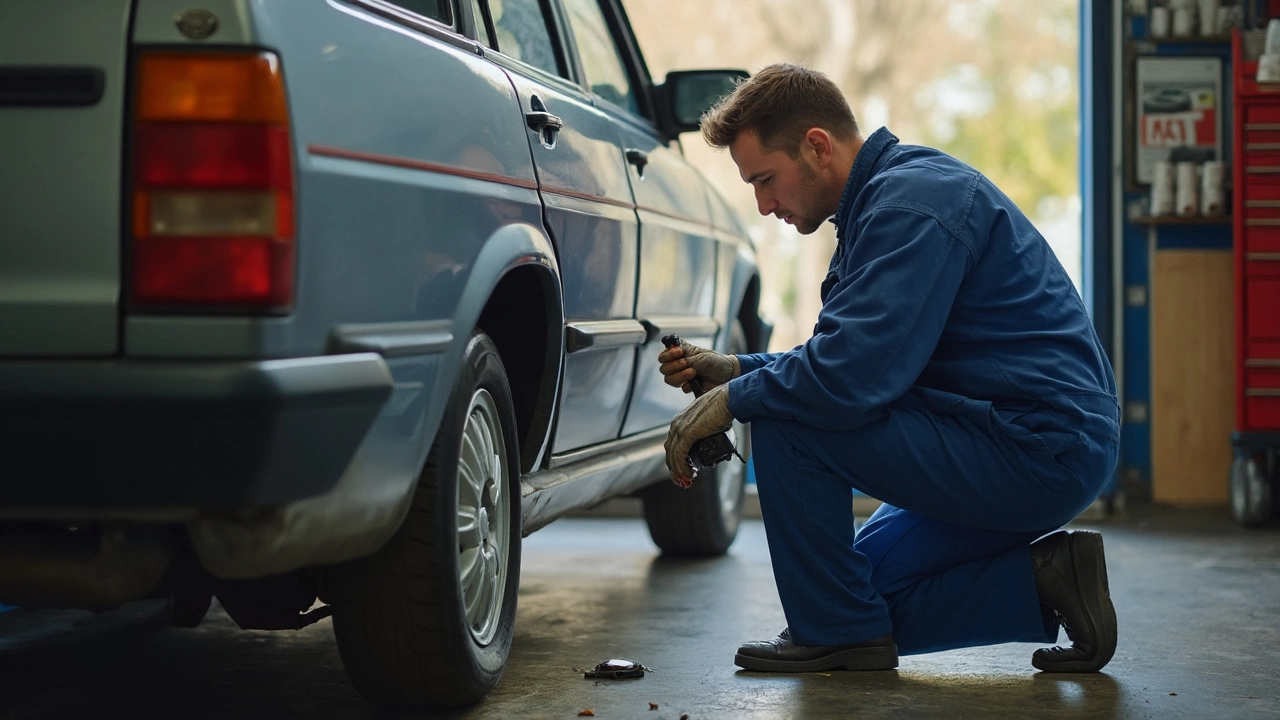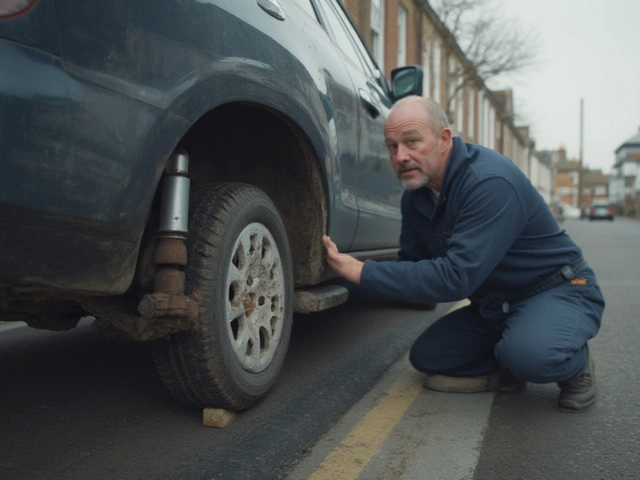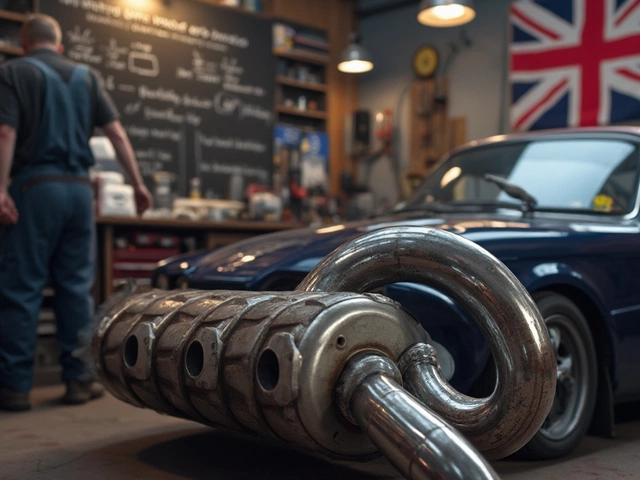Few things mess with your driving confidence like a car that handles strangely. Picture this: You’re cruising home after a long day, hit a mild bump, and your car jolts like it’s crossed railroad tracks. Weird noises start creeping in. The steering feels loose—almost floaty—but you tell yourself it’s just the road, or the weather, or maybe you’re overthinking. But deep down, you know you’re ignoring something important: your suspension system. When people talk about car safety, they’ll mention brakes, tires, and airbags, but suspension barely gets a mention. That’s wild considering it’s what keeps your tires glued to the road and stops your car from bouncing down the highway like a trampoline on wheels.
What Exactly Does Your Suspension Do?
Your car’s suspension isn’t just a tangle of springs and shocks hiding under your ride. This system spreads your car’s weight across the chassis, so you get a smoother drive and your steering feels solid. It absorbs those pothole punches, tames speed bumps, and keeps your wheels gripping the road—especially during turns or sudden stops. Most modern cars pack independent suspension on each wheel, which means the front left tire could be riding over debris while the back right glides smoothly, all without causing a drama in your seat. Key parts include shock absorbers (dampers), coil springs, struts, bushings, and control arms. Mess with any of these and you’ve got a recipe for trouble. Some cars, especially SUVs and trucks, add air springs or leaf springs to the mix for hauling loads or taking bumps off-road. Even high-tech rigs might feature adaptive suspensions that adjust damping on the fly using sensors and computer chips.
According to a 2021 study by the National Highway Traffic Safety Administration (NHTSA), about 3% of vehicle accidents related to mechanical failures cited suspension as a factor—that's not a tiny number when you consider millions of cars on the road. So, if you’re thinking about skipping that bouncy ride as just a nuisance, maybe don’t. A bad suspension can affect everything from braking distance to tire longevity, even if your car isn’t making cartoon hopscotch jumps down the expressway. Ever wonder why your car leans in corners or loses grip fast in the rain? Odds are, the suspension’s involved. It’s why racers obsess over shock settings, and it’s why you should care about what’s going on underneath your family sedan.
People usually ignore suspension wear because it creeps up over thousands of miles—sometimes tens of thousands. You get used to little body rolls, squeaks, and wallows, especially on cars you’ve owned for a while. Don’t get lulled into thinking that’s normal—manufacturers design and test suspensions for thousands of cycles, and any noise or drift is a signal, not just a feature of an old car. Bumpy rides, uneven tire wear, rubbing or whining noises, and steering that feels disconnected all spell potential problems. Spotting these early makes a difference in cost, comfort, and downright safety.

Spotting the Signs: How To Know Your Suspension Is Bad
So, what should make you suspicious? Let’s nail down the real-world clues instead of vague advice. First up—your car rides rougher than a tractor on a gravel road. If bumps feel harsh or the car seems to bounce long after you hit a hole, your shocks or struts could be toast. Watch for your steering wheel tugging left or right. Does the car lean hard on turns or nosedive when you brake even gently? That’s classic suspension fatigue.
- Noisy suspension: If you hear clunks, creaks, or rattles, no matter if you’re going slow or fast, those could be worn bushings, broken springs, or busted shock mounts.
- Uneven tire wear: Suspension issues tend to reveal themselves as weird tire patterns—cupping, bald patches, or even a feathered look on the edges. Bad shocks aren’t absorbing impacts, so the tire ends up slapping the road with uneven pressure, killing both grip and tire life.
- Car sits uneven: Walk around your car and check if one corner sags lower than the others. Sit your coffee cup on the hood and see if it tips. This could mean a failed spring or strut mount.
- Steering feels funky: If every turn feels disconnected—like you’re piloting a boat, not a car—the suspension might not be keeping the tires properly planted. Worn tie rods or control arms throw your alignment out, and suddenly steering gets vague or twitchy.
- Poor braking performance: A healthy suspension helps your wheels press firmly into the road. If you hit the brakes and the nose dips with a squat, or you get diving and tail-lifting, the dampers are likely worn out.
There’s a super easy driveway test you can try right now—the “bounce test.” Push down on the hood or trunk and let go. Your car should rebound up and settle back down in one smooth return. If it keeps bouncing more than once or twice, your shocks or struts are probably done.
If you really want to see the difference, check out this table:
| Symptom | Possible Cause | What To Check |
|---|---|---|
| Unstable ride, lots of bouncing | Worn shocks/struts | Bounce test, check leaks |
| Clunking noises on bumps | Broken bushings, mounts | Listen during slow turns |
| Car leans in corners | Tired springs or dampers | Look for sagging, side-to-side |
| Uneven tire wear | Alignment or bushing issues | Inspect tire tread patterns |
| Steering feels loose | Worn tie rods/control arms | Check steering play |
Watch out for oil or greasy residue along the strut or shock body. That’s a sign fluid has leaked, so the damping isn’t effective anymore. Modern shocks are sealed—when they lose fluid, they’re done. Also, if your suspension squeaks in wet weather but not in dry, that might point to bushing issues. By the way, damage from potholes is brutal. AAA estimates that pothole-related damage, often hitting suspension hard, costs U.S. drivers over $3 billion annually.
Now, you might have a favorite backroad that used to be fun, but suddenly the car feels less planted, especially on sweepers. That means your suspension’s falling behind. Or maybe you’re loading up for a home improvement run at the hardware store and notice the back end drooping like a lowrider. Springs or rear shocks probably can’t hold up anymore. Address these issues fast, because bad suspension doesn’t just feel sketchy—it wears out other parts, makes accidents more likely, and drains your wallet way faster over time.

How To Check Suspension at Home: Step-by-Step Tips
The garage isn’t just for pros—if you can use a flashlight, you can catch early warning signs before they wreck your ride. Here’s how you can run a proper suspension check yourself, no fancy tools needed.
- Start with a good look all around the car. Park on level ground. Step back and scan for any leaning or sagging corners. Sometimes you need to eyeball from different angles. Note any wheel that sits noticeably lower than the others.
- Do the bounce test on each corner. Push down firmly on the hood or each fender, and release. The car should rebound smoothly just once. Multiple up-and-down motions mean weak shocks.
- Check the tires for odd wear. Get down and look at the tread. Uneven edges, bald spots, or deep scallops signal a suspension issue, often with alignment or damaged bushings.
- Look for oily spots on shocks or struts. Run your finger carefully over the shock body to spot fluid leaks. Clean components mean they’re healthy; greasy or wet means you’ve got a problem.
- Give the wheels a wiggle. With the car parked, grip a front and rear tire and rock it side to side. Any play or looseness could mean worn tie rods or ball joints. If the movement is more than a slight wiggle, something needs fixing.
- Turn the steering wheel and listen closely. Noises like knocking, popping, or squeaks when you steer could point to failing suspension joints or bushings.
- Test drive—listen and feel. Pay special attention when driving over speed bumps, railroad tracks, or rough patches. The car should stay composed and quiet. Harsh rebounds, noises, or snaking over bumps reveal problems lurking underneath.
As you work through each spot, make mental notes of anything weird. Don’t ignore even small changes. Quick tip: If you spot rust on suspension springs, especially at the bottom where water gathers, check closely for cracks—a broken coil spring can collapse suddenly. All this might sound obsessive, but catching trouble early often saves hundreds on future repairs and keeps your car driving the way it should.
If your DIY checkup turns up issues but you aren’t sure of the next step, most repair shops will inspect your suspension as part of regular maintenance for less than the cost of a pair of concert tickets. And no, you don’t have to be a “car person” to protect your investment. Replacing worn parts like shocks and struts is way cheaper than dealing with frame or tire damage caused by ignoring the warning signs.
To wrap this up, think about how the suspension is the unsung hero that lets you drive fast, turn safely, brake with confidence, and enjoy every road trip—even the ones with more potholes than pavement. Spending a few minutes checking your ride now might save you a ton of money, but more than that, it could help you avoid that sudden white-knuckle moment nobody ever wants to face when a split-second counts. Nasty noises, extra bouncy rides, uneven tires—none are "quirky" features. If you’re noticing them, your car’s trying to tell you something. So, listen up and act before things get ugly.






